NYC’s Forgotten ‘War on Christmas Trees’
Discover how an obscure holiday crackdown affects festive street vendors today!


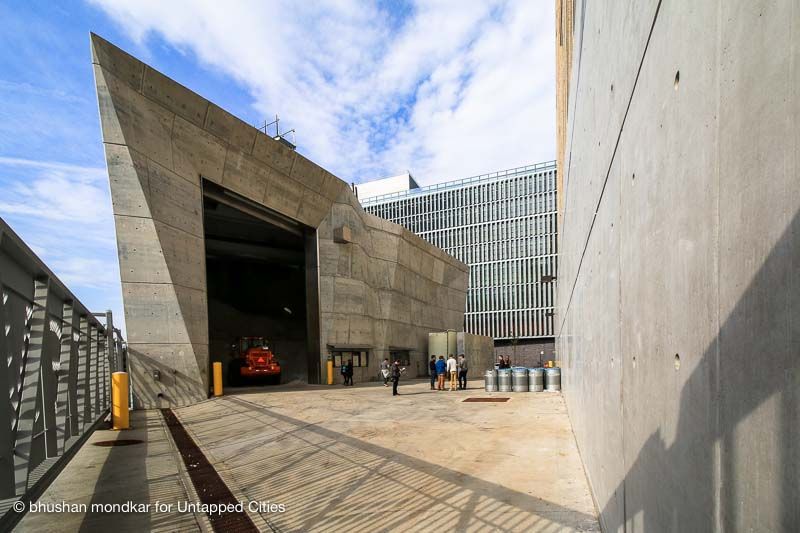
As a leader in various fields spanning the arts to finance, New York City has unsurprisingly been experimenting with innovative sustainability initiatives. With consideration to changing climate conditions, a growing city population and aging infrastructure, the importance of these programs cannot be underscored enough. This is why Untapped Cities is launching a new sustainability column, which we recently announced in conjunction with a new interactive video from green energy company Ørsted, “Home,” which you can watch a preview for below:
Our new column will address the initiatives that are making cities more livable and providing a better quality of life for all New Yorkers. It will tackle sustainability in its many forms, from environmental practices and mass transit policies to the construction of affordable housing units.
To kick things off, here is a look at 10 of the most exciting sustainable energy projects currently unfolding in New York City:
As part of the Roosevelt Island Tidal Energy (RITE) Project, 30 Gen5 KHPS turbines were installed along the East River’s East Channel, a tidal strait that connects the Long Island Sound with the Atlantic Ocean in the New York Harbor. The initiative — the first ever commercially licensed tidal energy project in the United States — was led by Verdant Power, Inc.
Although Verdant has been developing and testing prototypes in the East River since 2002, the turbines were fully installed in 2015. They use tides and currents to generate 1,050 kilowatts of energy that is utilized by 9,500 New York residents. In addition, they also collect data about river sediment and environmental impacts on fish.
Check out the interactive video “Home” at loveyourhome.orsted.com.
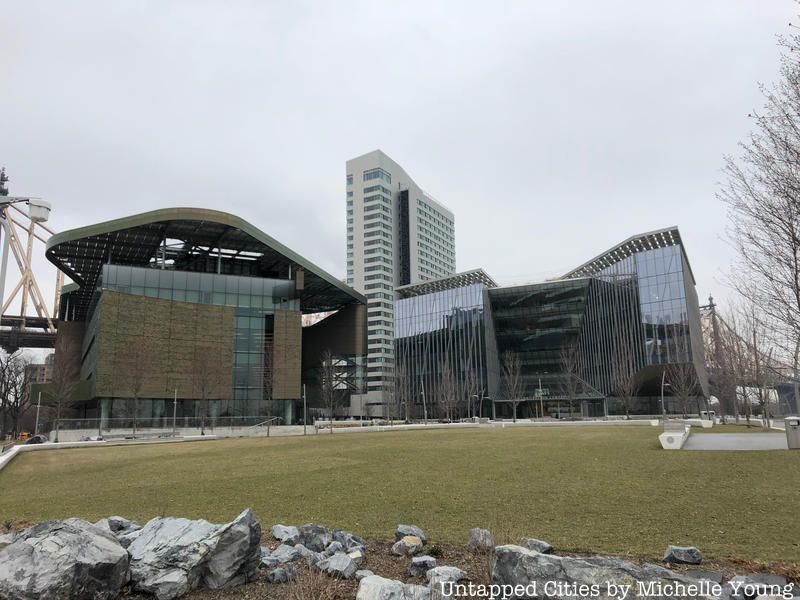
Roosevelt Island may only span 150-acres, but it’s now home to a “new kind of urban campus:” Cornell Tech. The science and technology-focused university, which was dedicated in September, was born out of a 2010 competition that called for the development of an applied sciences campus within the five boroughs.
Although the campus is slated to undergo two other major phases of construction, it’s currently comprised of three, “environmentally conscious” buildings: the “net-zero” energy main academic building, called the Emma and Georgina Bloomberg Center; the housing quarters for students and faculty, aptly called “The House,” and a center for classrooms, workspaces and commercial tenants, called “The Tata Innovation Center” (formerly known as “The Bridge”), which is owned by developer Forest City Ratner.
Each building boasts various sustainable design features: targeting LEED Platinum Certification, The Bloomberg Center aspires to be one of the largest Net-Zero energy buildings in the United States. It utilizes a passive energy-efficient design that includes a rooftop photovoltaic (solar power) array system and geothermal heating and cooling systems. Similarly, the Tata Innovation Center is built to LEED Silver sustainability standards and features expansive windows, as well as a rooftop terrace surrounded by a solar trellis.
Most notable is The House, which is the world’s largest residential “passive house,” meaning it makes use of sophisticated shading, insulation and ventilation systems to heat and cool its interior. With these incorporated features, the building is projected to save 882 tons of CO2 per year (the equivalent of 5,300 new trees being planted). Read more about the campus here.
Check out the interactive video “Home” at loveyourhome.orsted.com.
Stuyvesant Town (known locally as StuyTown), the apartment complex just north of the East Village, is making additional moves toward becoming more green. Beginning this winter, solar panels will be installed on 22-acres of the complex’s rooftop. The $10 million project, slated to be completed in 2019, would create the largest private multifamily solar installation in the country.
To be installed by the New York City-based renewable energy developer, Onyx Renewable Partners, the 9,671 high efficiency solar panels will be spread out across 56 buildings, and are expected to reduce approximately 63,000 tons of carbon dioxide emissions. (That’s comparable to taking 12,000 cars off the road each year.) While the solar panels will not provide power to all of StuyTown’s residents — only about nine percent of the 80-acre complex, or 1,000 apartments, will be receiving the energy — this installation could triple Manhattan’s solar power generation capacity.
This is not the first time Stuy Town has used energy management technologies. Some past initiatives include the installation of LED lighting, high efficiency hot water heat exchangers, and domestic water flow control valves. The apartment complex has also earned an ENERGY STAR certification for a third year.
Check out the interactive video “Home” at loveyourhome.orsted.com.
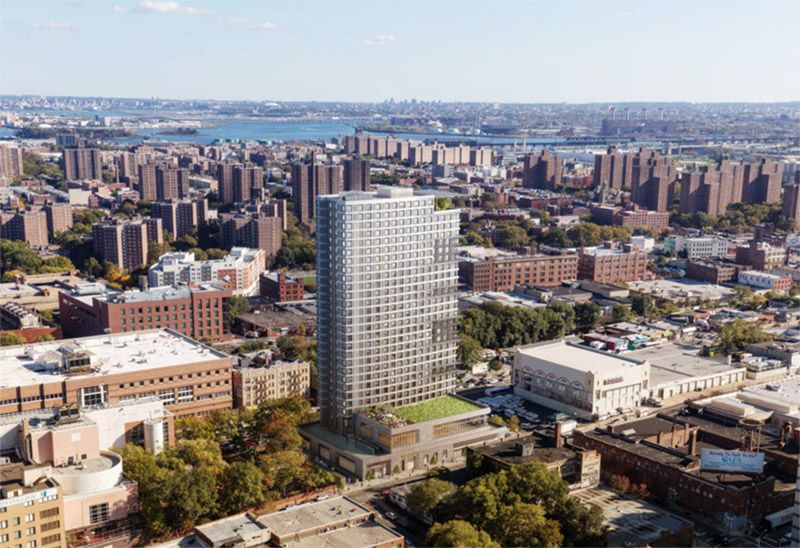
Rendering of 425 Grand Concourse. Rendering by Dattner Architects
Headed by Dattner Architects, the 425 Grand Concourse development will soon arrive to the Mott Haven neighborhood of the Bronx, taking over the former location of the P.S. 31 School Building. When it is completed in 2020, it will become the largest passive house in New York City, featuring 289 affordable apartments. The project will also include the re-opening of the Garrison playground and the establishment of both commercial and non-profit spaces (like a supermarket, a school, a medical facility and a variety of community/cultural spaces).
Due to its innovative design that incorporates New York City Active Design Guidelines, the 28-story tower is expected to operate on 70% less energy than a conventional building of similar size. According to NYC Housing Preservation & Development, it will not only meet the Enterprise Green Communities Guidelines, but also surpass them with the help of building-wide measures that include a green roof, solar-shading devices, water saving features and energy-recovery systems. In addition, apartments will reportedly have individual energy controls and energy efficient appliances.
Check out the interactive video “Home” at loveyourhome.orsted.com.
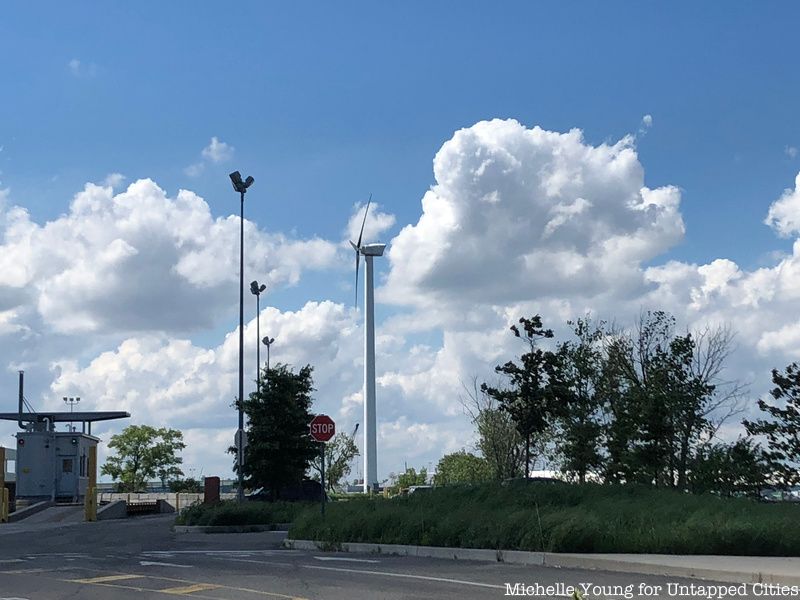
The state-of the-art SIMS Municipal Recycling Facility, located at the South Brooklyn Marine Terminal (SBMT), is New York City’s principal recycling center, which processes 20,000 tons of residential metal, glass, plastic and paper collected from the Department of Sanitation every month.
Operated by Sims Municipal Recycling and completed in 2013 using sustainable design practices, the facility is noted for its award-winning architectural design, which features advanced sorting equipment, interactive educational displays, a 600kW solar panel array and New York City’s first commercial-scale (and largest) wind turbine, which was manufactured by Northern Power Systems and installed by Aegis Renewable Energy in 2014. The 120-foot-tall turbine (or 160-feet if you count its blades) sits on the 30th Street pier of the Brooklyn Waterfront. It helps to produce up to four percent of the energy used by the facility. When used in conjunction with a 600kW solar array, up to 20 percent of the required energy is produced.
Check out the interactive video “Home” at loveyourhome.orsted.com.
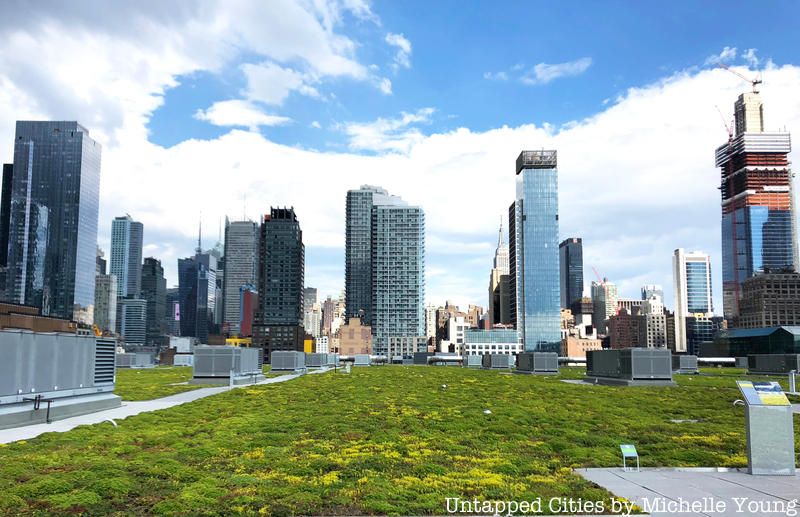
The Jacob K. Javits Center, home to nearly 180 convention events a year, might be the last place you’d expect to find a verdant green roof. Yet, given its massive size, comprised of 840,000 square feet of convention space and 2.1 million total area space (including an extension), the center is actually an ideal location for exactly this purpose.
Equivalent in size to five football fields, its 6.75 acre green roof by Xero Flor was part of the $463 million renovation to the Javits Center by FX Fowle and Epstein, which notably included the replacement of the recognizable glass facade to make it bird friendly, as well as the addition of 100 energy-efficient HVAC units, energy-efficient lighting and new recycling containers. The roof, in particular, soaks up 6.8 million gallons of rainwater each year and provides a wildlife refuge for 17 bird species, five bat species and 300,000 honeybees. Such efforts have led to a 25% savings in energy costs, which explains why the Javits Center was awarded LEED Silver certification in 2015.
Check out the interactive video “Home” at loveyourhome.orsted.com.
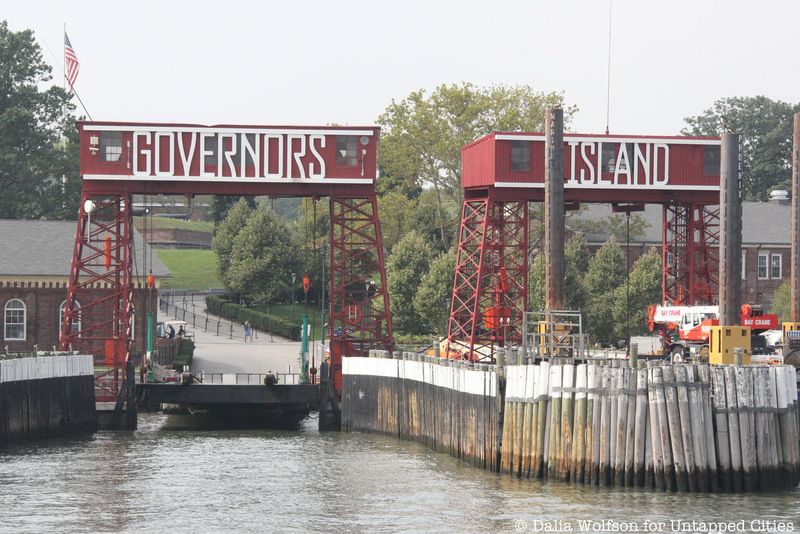
The history of New York City’s oysters is a tragic one. Dredging, pollution and over harvesting throughout the last four centuries have almost entirely decimated New York’s oyster supply, which once counted 220,000 acres of oyster beds. Improbably, given the city-wide partnerships for oyster restoration, there is once again hope for the reefs.
The Billion Oyster Project began in 2012, and hopes to restore one billion oysters to New York Harbor by 2030. To accomplish this lofty goal, it hosts educational activities, restaurant recycling initiatives and other related programs throughout the city. To date, the initiative has returned around 20 million oysters to the harbor, primarily around Governor’s Island and at the mouth of the Bronx River. As part of its programming, the Billion Oyster Project also partners with the New York Harbor School, a public maritime high school that instills the “ethics of environmental stewardship and the skills associated with careers on the water.”
Check out the interactive video “Home” at loveyourhome.orsted.com.
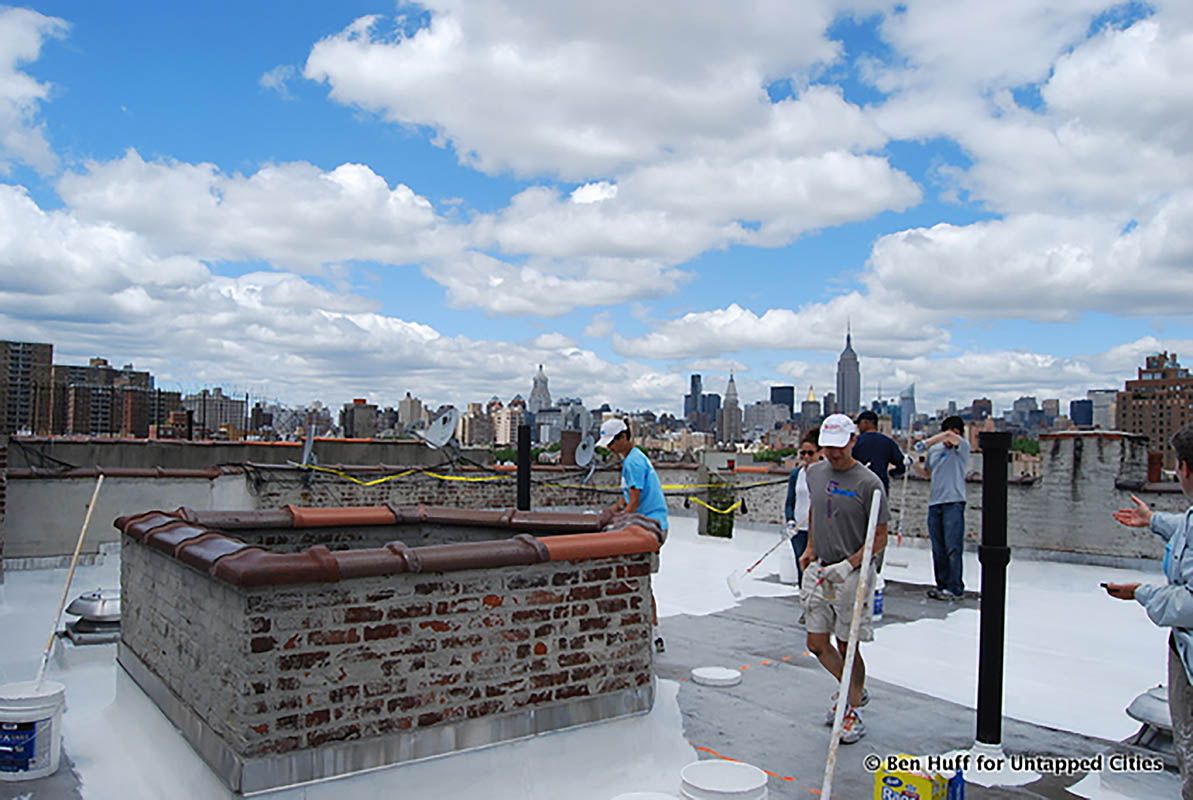
Officially launched in 2009, NYC °CoolRoofs offers free roof paints jobs to public properties, nonprofits, affordable housing buildings and hospitals, among other places. (Privately-owned buildings will have to pay for the installation). The reason is simple: to cover rooftops in white paint to reflect the solar rays and to reduce the amount of heat that black roofs capture.
Buildings with the reflective paint can lower internal temperatures by 30% and decrease air conditioning costs by 10% to 30%. Since 2009, the program has invited 5,000 volunteers and covered more than 6.7 million square feet of rooftops throughout the city.
There are numerous interventions possible, including green roofs, but white roofs are by far the most cost effective. In a retrograde as simple as this, all that is required are paint brushes, rollers, buckets, plastic bags, paint, and of course volunteers. Under the umbrella of the Department of Buildings, NYC °CoolRoofs works behind the scenes to identify roofs, to ensure buildings are structurally safe to paint, and to get volunteers up to paint them. The organization partners with NYC Service, which helps leverage the labor of over 3,000 volunteers. But NYC Service is not the only player: the White Roof Project performs education outreach and marketing for white roofs, in addition to staffing volunteer projects.
For those that are interested in volunteering, contact NYC °CoolRoofs or the White Roof Project.
Check out the interactive video “Home” at loveyourhome.orsted.com.

Earlier this year, we had a chance to visit inside the New York City Department of Sanitation (DSNY)’s garage and salt shed complex in Hudson Square, Tribeca. Designed by WXY architecture + urban design and Dattner Architects, it currently serves 300,000 residents in Manhattan Community Districts 1, 2, and 5, and has been rewarded for for its excellence in environmental sustainability.
While the 70-foot, crystalline shaped salt shed is certainly a stunning sight, the sleek garage building on the corner of Canal Street and West Side Highway should be noted specifically for its sustainability measures. It’s a LEED Gold certified structure that cleans and repairs 150 sanitation trucks. The environmentally friendly design of the building deals with water usage: by using municipal steam to generate hot water for heating and mechanical ventilation, the building does not burn fuel. Furthermore, condensation that accrues as a by-product of steam is stored, alongside harvested rainwater from the roof, in a 20,000 gallon cistern. These strategies have contributed to a 77% decrease in potable water use in the building.
In addition to collecting rainwater, which is used to wash trucks, the garage building includes a spectacular 1.5 acre green roof. The 13,250 pre-planted trays, featuring 25 distinct drought resistant species, protect the roof membrane, while reducing heat absorption and enhancing storm water retention The sleek glass building is covered by 2,600 custom-made sunshades—or “fins,” as they are called—that allow natural light to flow into the building while reducing glare. On sunny days, only half of the light fixtures are on. Some of the fins are also operable, allowing them to swivel and block glare at certain times of the day. Read more about the salt shed and garage here.
Check out the interactive video “Home” at loveyourhome.orsted.com.
In an ongoing mission to make New York City a more oyster-friendly (and sustainable place to live), the NYC Department of Education has partnered with the Department of Environmental Protection to retrofit inefficient bathroom fixtures across schools in all five boroughs. The “Toilet Recycling Project,” detailed in the video above, replaced approximately 5,000 porcelain potties, which were crushed and used to construct an oyster reef in Jamaica Bay, as well as bioswales that collect stormwater in the city.
The DEP provided the funding for the initiative, which had a goal of retrofitting 500 New York City school buildings — an ambitious endeavor considering the fact that New York City is home to the largest school system in the United States with 1.1 million students and 1,300 facilities (many of which were constructed before the mid-1990s). According to the video, the city could eventually save four million gallons of water per day by removing 30,000 old toilets from Department of Education facilities alone and replacing them with more water-efficient fixtures.
Next, check out more from our sustainability column and create your film at loveyourhome.orsted.com.
Subscribe to our newsletter